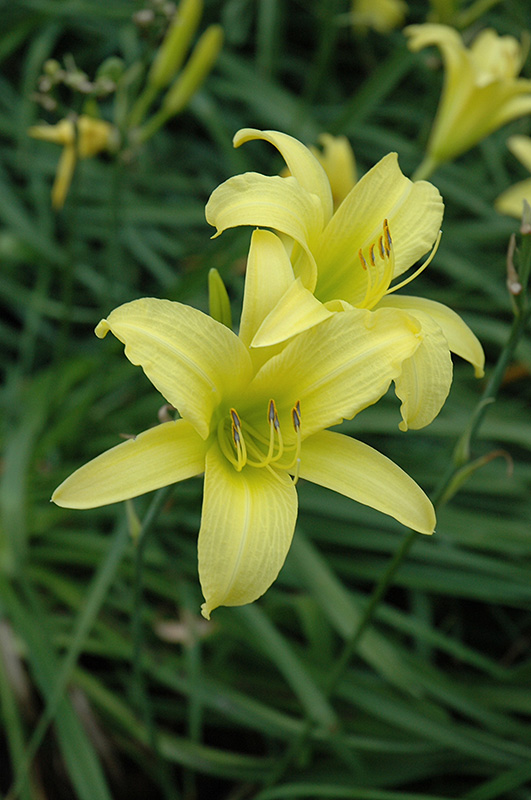Plant Height: 24 inches
Flower Height: 3 feet
Spacing: 26 inches
Sunlight:
![]()
![]()
Hardiness Zone: 2
Description:
Forms large clumps of grass-like foliage. Large, fragrant, pale yellow flowers. Prolific bloomer. Very hardy and easy to grow.
Ornamental Features
Hyperion Daylily features bold lightly-scented lemon yellow trumpet-shaped flowers with chartreuse throats at the ends of the stems from early to late summer. The flowers are excellent for cutting. Its grassy leaves remain green in color throughout the season.
Landscape Attributes
Hyperion Daylily is an herbaceous perennial with tall flower stalks held atop a low mound of foliage. Its medium texture blends into the garden, but can always be balanced by a couple of finer or coarser plants for an effective composition.
This plant will require occasional maintenance and upkeep, and is best cleaned up in early spring before it resumes active growth for the season. It is a good choice for attracting butterflies to your yard. It has no significant negative characteristics.
Hyperion Daylily is recommended for the following landscape applications;
- Mass Planting
- General Garden Use
- Groundcover
Planting & Growing
Hyperion Daylily will grow to be about 24 inches tall at maturity extending to 3 feet tall with the flowers, with a spread of 32 inches. When grown in masses or used as a bedding plant, individual plants should be spaced approximately 26 inches apart. It grows at a medium rate, and under ideal conditions can be expected to live for approximately 10 years. As an herbaceous perennial, this plant will usually die back to the crown each winter, and will regrow from the base each spring. Be careful not to disturb the crown in late winter when it may not be readily seen!
This plant does best in full sun to partial shade. It is very adaptable to both dry and moist locations, and should do just fine under typical garden conditions. It may require supplemental watering during periods of drought or extended heat. It is not particular as to soil type or pH. It is highly tolerant of urban pollution and will even thrive in inner city environments. Consider applying a thick mulch around the root zone in both summer and winter to conserve soil moisture and protect it in exposed locations or colder microclimates. This particular variety is an interspecific hybrid. It can be propagated by division; however, as a cultivated variety, be aware that it may be subject to certain restrictions or prohibitions on propagation.

